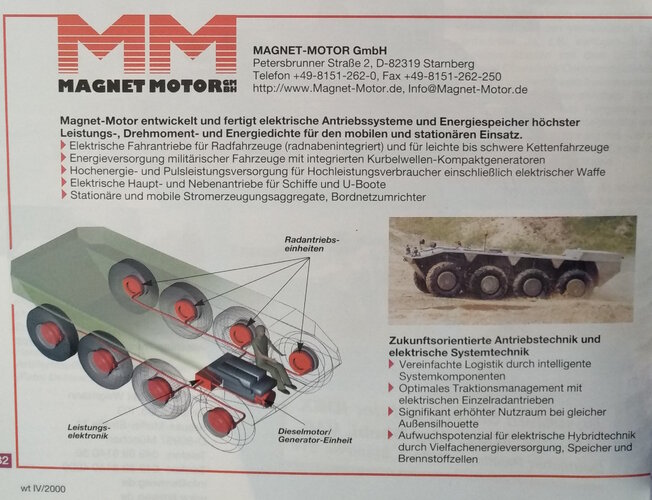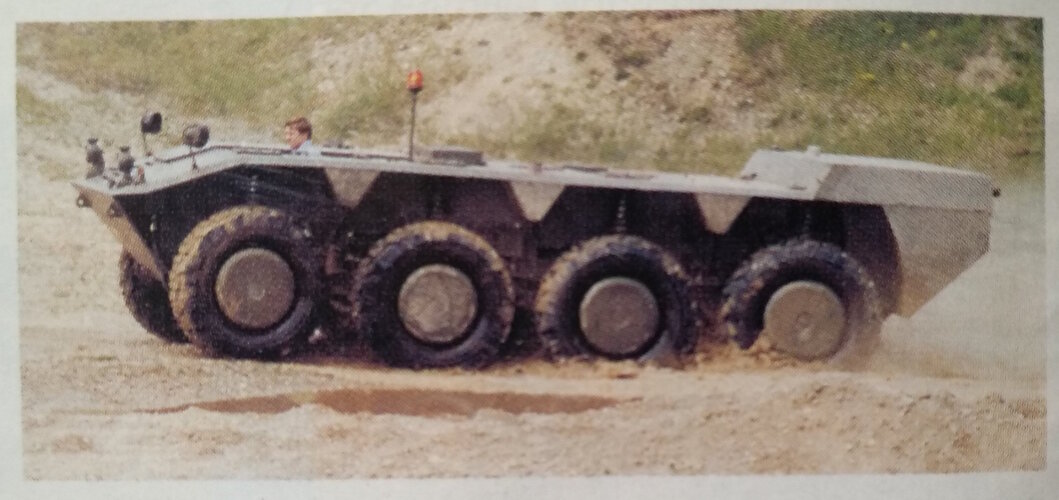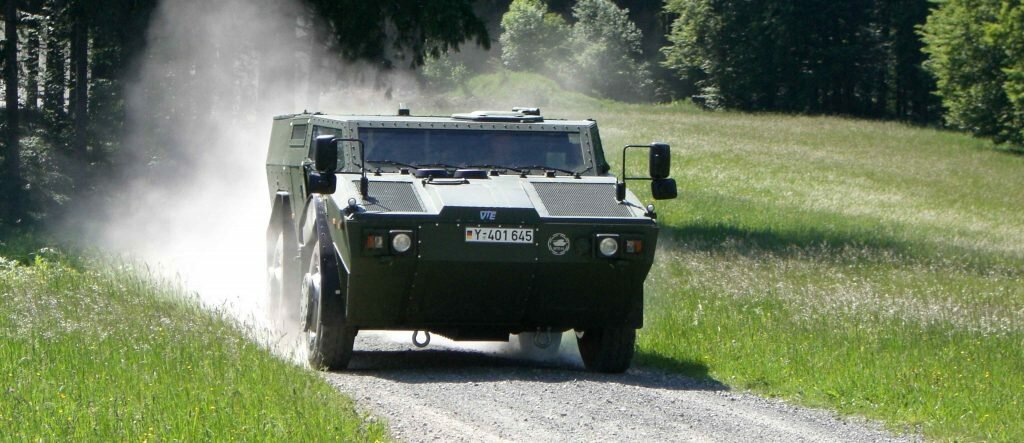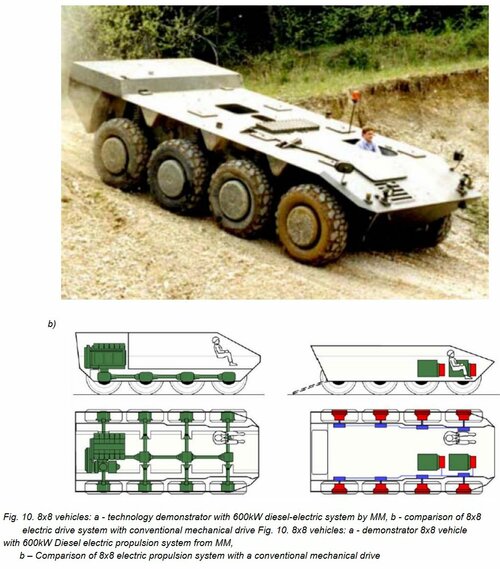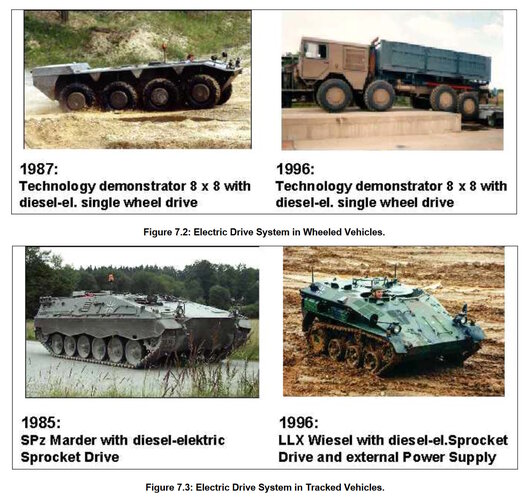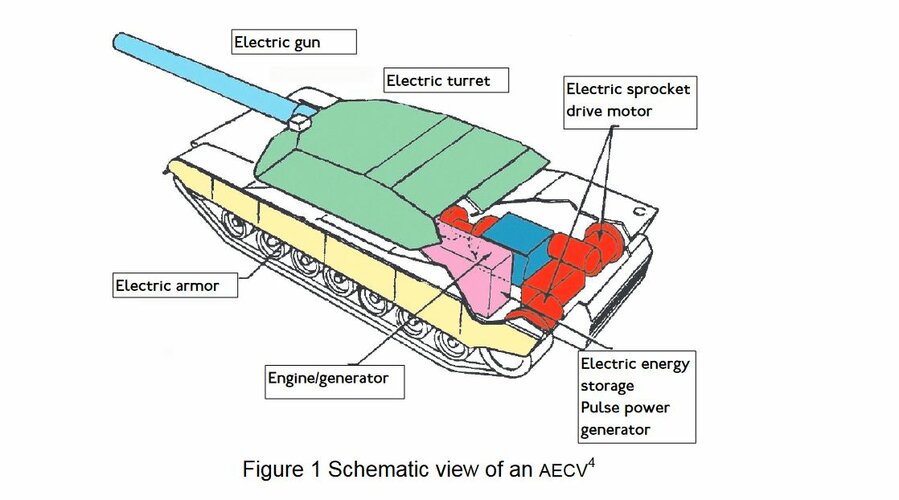Voltzz
ACCESS: Secret
- Joined
- 10 April 2021
- Messages
- 387
- Reaction score
- 1,378
I found an ad from the German company Magnet-Motor from the year 2000, showing an 8x8 diesel-electric AFV with wheel-hub-motors. From a quick google Magnet-Motor also built the motors for the General Dynamic AHED (Advanced Hybrid Electric Demonstrator) but i cant find any connection between the two vehicles except both being 8x8.
Does anyone have any more information on the shown vehicle or any other Magnet-Motor AFV projects?
Does anyone have any more information on the shown vehicle or any other Magnet-Motor AFV projects?

